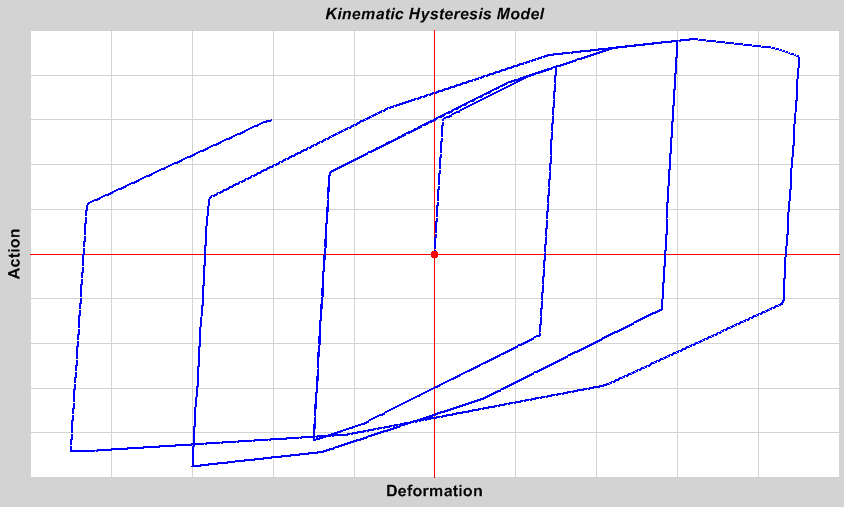
This model is based upon kinematic hardening behavior that is commonly observed in metals, and it is the default hysteresis model for all metal materials in the program. This model dissipates a significant amount of energy, and is appropriate for ductile materials.
Under the rules of kinematic hardening, plastic deformation in one direction “pulls” the curve for the other direction along with it. Matching pairs of points are linked. No additional parameters are required for this model.
Upon unloading and reverse loading, the curve follows a path made of segments parallel to and of the same length as the previously loaded segments and their opposite-direction counterparts until it rejoins the backbone curve when loading in the opposite direction. This behavior is shown the Figure for cycles of increasing deformation.
When you define the points on the multi-linear curve, you should be aware that symmetrical pairs of points will be linked, even if the curve is not symmetrical. This gives you some control over the shape of the hysteretic loop.
The kinematic model forms the basis for several of the other model described below, including Takeda, degrading, and BRB hardening.

See Also: